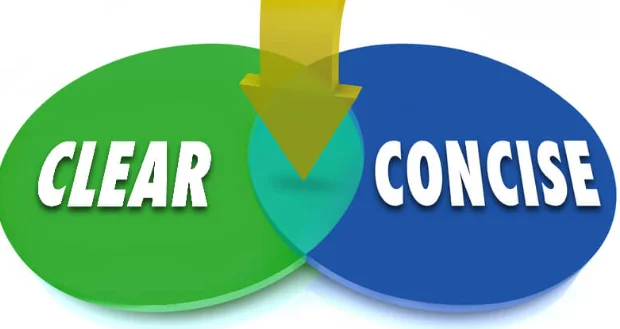8 Simple Steps How to Write a Good Acknowledgement for Thesis

The thesis acknowledgment holds a unique place in the academic world. It’s a heartfelt gesture, a moment to express gratitude, and a chance to acknowledge the individuals and resources contributing to your academic journey.
This guide will delve into crafting a thoughtful and well-structured thesis acknowledgment.
We will provide you with eight simple steps to help you write an acknowledgment that does justice to your academic journey and expresses your gratitude sincerely.
What to Include in your Acknowledgement

In your acknowledgment, include gratitude to individuals, institutions, and resources contributing to your thesis.
Mention advisors, professors, peers, and anyone who provided guidance or support.
Acknowledge funding sources, libraries, and research facilities that aided your work. Keep it concise, sincere, and relevant to your academic journey.
8 Steps How to Write an Acknowledgement for Thesis
1. Understanding the Purpose of Acknowledgements
Acknowledgments provide a platform to recognize and appreciate the contributions of individuals, institutions, or organizations who have supported or influenced your research journey.
They are a means to express gratitude and respect for the guidance, mentorship, and assistance received during the thesis project.
Acknowledgments are a chance to infuse a personal touch into your academic work, reflecting your character, values, and appreciation for those who played a significant role in your academic success.
2. When and Where to Place the Acknowledgment
The acknowledgment section is typically positioned after the abstract and before the table of contents in the thesis document.
It is an integral part of the front matter and sets the tone for your research.
While the formal acknowledgment is placed at the beginning of the thesis. Remember to acknowledge contributions and support received throughout your research journey within the appropriate context in the body of your work.
Maintain a professional and sincere tone in your acknowledgment. It should reflect your genuine appreciation and respect for those mentioned.
Tailor the style to match the formality of your thesis and the relationships you’re acknowledging.
3. Identifying Key Contributors
When crafting your acknowledgment, consider recognizing these key contributors.

First, your academic advisors and mentors have provided invaluable guidance, expertise, and support throughout your research journey. Mention them prominently for their role in shaping your thesis.
If you worked closely with collaborators or co-researchers, acknowledge their contributions to your research’s joint efforts and collective achievements.
Acknowledge any financial support received from funding organizations, institutions, or sponsors. Their support may have been instrumental in making your research possible.
Express gratitude to your family and friends for their unwavering encouragement, understanding, and emotional support during the challenging phases of your academic pursuit.
If inspirational figures or role models influenced your academic path, consider mentioning them to convey the impact of their guidance or example on your journey.
4. Crafting a Well-Structured Acknowledgement
- Start with a formal address, such as “I would like to express my heartfelt gratitude to…” or a similar opening that sets the tone for appreciation.
- Systematically list individuals, institutions, or groups who contributed to your thesis. Begin with the most significant contributors and progress in a logical order.
- Keep your acknowledgments concise while providing specific details about the contributions of each party. Mention how their support impacted your research.
- Maintain a tone of respect and professionalism throughout your acknowledgment, reflecting the gravity and significance of the contributions you’re acknowledging.
5. Including Personal Touch and Stories
Include anecdotes or stories highlighting the depth of your relationships with those you acknowledge. Share moments that left a lasting impression during your academic journey.
Let your true emotions shine through. Whether gratitude, admiration, or affection, express your feelings sincerely to convey the depth of your appreciation.
Weave in how the individuals or groups you acknowledge played a role in your thesis journey. Show how their support, guidance, or inspiration contributed to the research and your personal growth.
6. Avoiding Common Mistakes
- Avoid vague, generic expressions of gratitude. Instead, be specific about the contributions and support each individual or group provides.
- Be thorough in acknowledging everyone who played a significant role in your thesis journey. Overlooking key contributors can be unintentionally hurtful.
- Maintain a professional tone while expressing genuine emotions. Avoid excessive informality or emotional outbursts that may detract from the formality of the acknowledgment.
- Stay on topic and keep your acknowledgment concise. Tangential stories or excessive length can dilute the impact of your gratitude
7. Acknowledgement Examples
Explore sample acknowledgments from various thesis types, such as scientific research, literature, or social sciences.
Mostly, this section will provide an analysis and breakdown of effective acknowledgments to help you understand the elements that make them impactful and sincere.
When you examine these examples, you can gain insights into crafting your acknowledgment for your specific thesis type.
8. Review and Edit Your Acknowledgement

- Carefully proofread for grammar, spelling, and clarity. Ensure your acknowledgment is free from typos or language issues that might detract from its professionalism.
- Ensure that your acknowledgment aligns with the tone and theme of your thesis. It should seamlessly fit within the context of your research and the academic style of your work.
- Share your acknowledgment with advisors and peers to gather feedback. Their input can help refine your acknowledgment for maximum impact.
Other Factors to Consider
- Acknowledge all contributions accurately and fully, ensuring that credit is attributed to individuals or institutions for their support, guidance, or resources.
- If you include quotations, figures, or content from other sources, cite them appropriately and obtain any necessary permissions. Ethical acknowledgment involves respecting intellectual property rights.
- Ensure your acknowledgment is free from conflicts of interest that could compromise its sincerity or integrity. Transparency and fairness are essential in recognizing contributions ethically.
Final Tips for a Memorable Acknowledgment
Keep it Heartfelt but Concise
A heartfelt acknowledgment is genuine and resonates with readers. However, it is essential to strike a balance by keeping it concise.
Avoid going into lengthy narratives; express your gratitude succinctly and sincerely.
Balance Humility and Professionalism
While it is essential to convey humility and gratitude, maintain a professional tone. Avoid excessive personal anecdotes or overly emotional language.

Maintain a respectful and professional demeanor in your acknowledgment.
Tailor Your Acknowledgments to Your Audience
Consider your target audience when crafting your acknowledgment. If your thesis is intended for academic peers, maintain a formal tone.
You can infuse more personal warmth if it’s for a broader readership.
Remember the Lasting Impact of Your Words
Acknowledgments are a permanent part of your thesis and can leave a lasting impression. Ensure that your words reflect the significance of the contributions you are acknowledging.
Also, be aware that future researchers and readers may refer to your acknowledgment for context and inspiration.
Conclusion
In crafting a good acknowledgment for your thesis, you’ve embarked on a journey of gratitude and recognition.
It is a small yet significant section with the weight of appreciation for those who’ve supported your academic endeavor.
Following the eight simple steps outlined in this guide, you’ve learned to structure your acknowledgment thoughtfully, express your gratitude genuinely, and avoid common mistakes.
Remember that your acknowledgment is not just a formal requirement. It is an opportunity to connect with your readers personally, share your journey’s highlights, and honor the contributions that shaped your research.
As you weave in personal stories and anecdotes, expressing authentic emotions and maintaining professionalism, your acknowledgment will be a testament to the meaningful relationships and experiences that enriched your thesis journey.

Josh Jasen or JJ as we fondly call him, is a senior academic editor at Grade Bees in charge of the writing department. When not managing complex essays and academic writing tasks, Josh is busy advising students on how to pass assignments. In his spare time, he loves playing football or walking with his dog around the park.




